Detailed description
| Detailed description |
| Control module use |
The control module is used to
| 1. |
calculate the distance to the closest object behind the vehicle using the values obtained from the distance sensors.
|
|
| 2. |
indicate the distance to the closest object behind the vehicle to the driver by means of audible signals via the loudspeakers in the audio system
|
|
| 3. |
determine when measurement should take place.
|
|
| 4. |
check and control the distance sensors.
|
|
| 5. |
communicate and collect information from other systems in the vehicle via the I-bus.
|
|
| 6. |
supply current to the rear distance sensors.
|
|
| 7. |
ground the rear distance sensors.
|
|
| 8. |
check the function with continuous self diagnosis.
|
|
| 9. |
communicate with the diagnostic tool.
|
|
| Temporary disengagement of SPA |
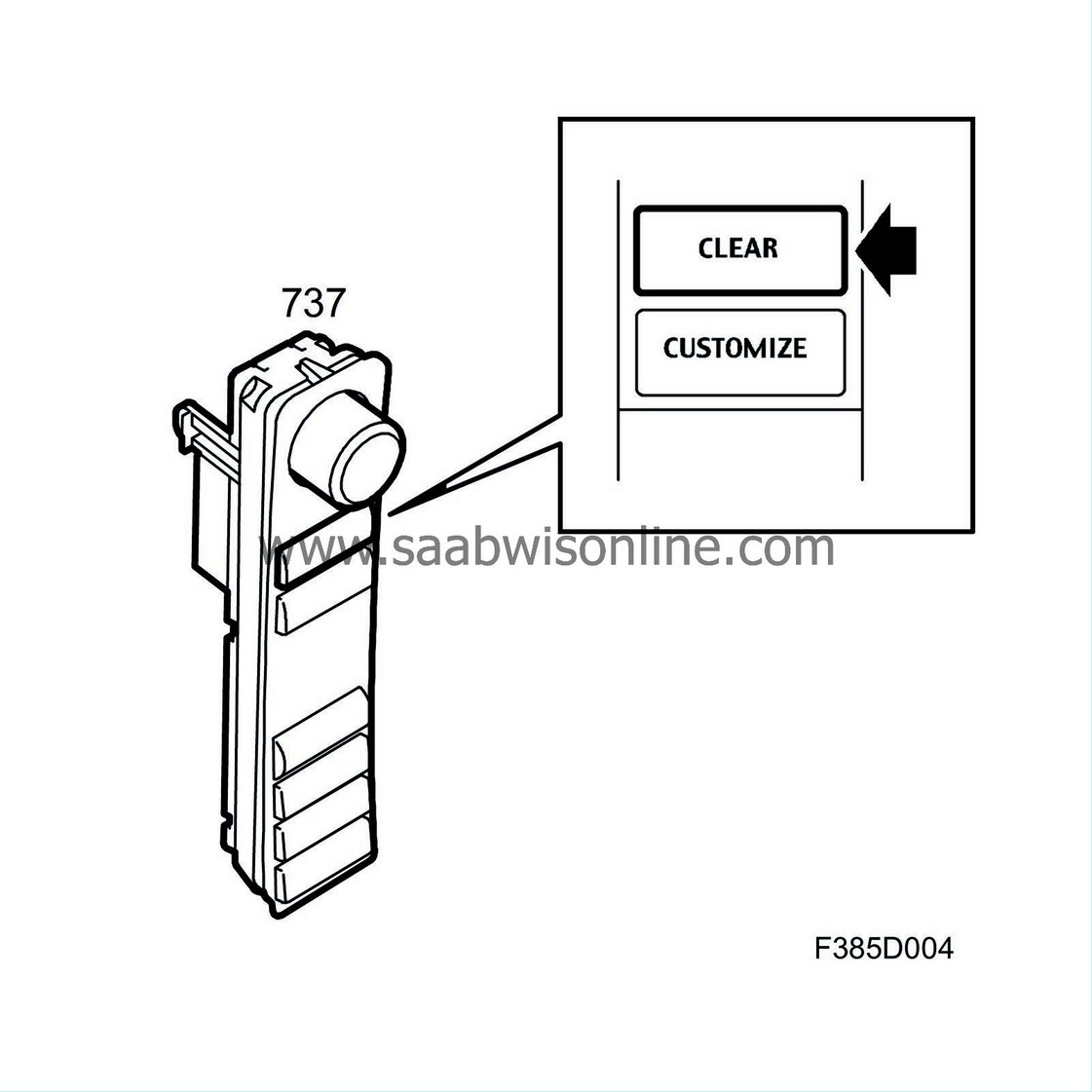
There are two alternative methods of re-engaging the parking assistance:
| • |
Ignition OFF followed by ignition ON.
|
|
| • |
Disengage and engage reverse gear.
|
|
| Permanent disengagement of SPA |
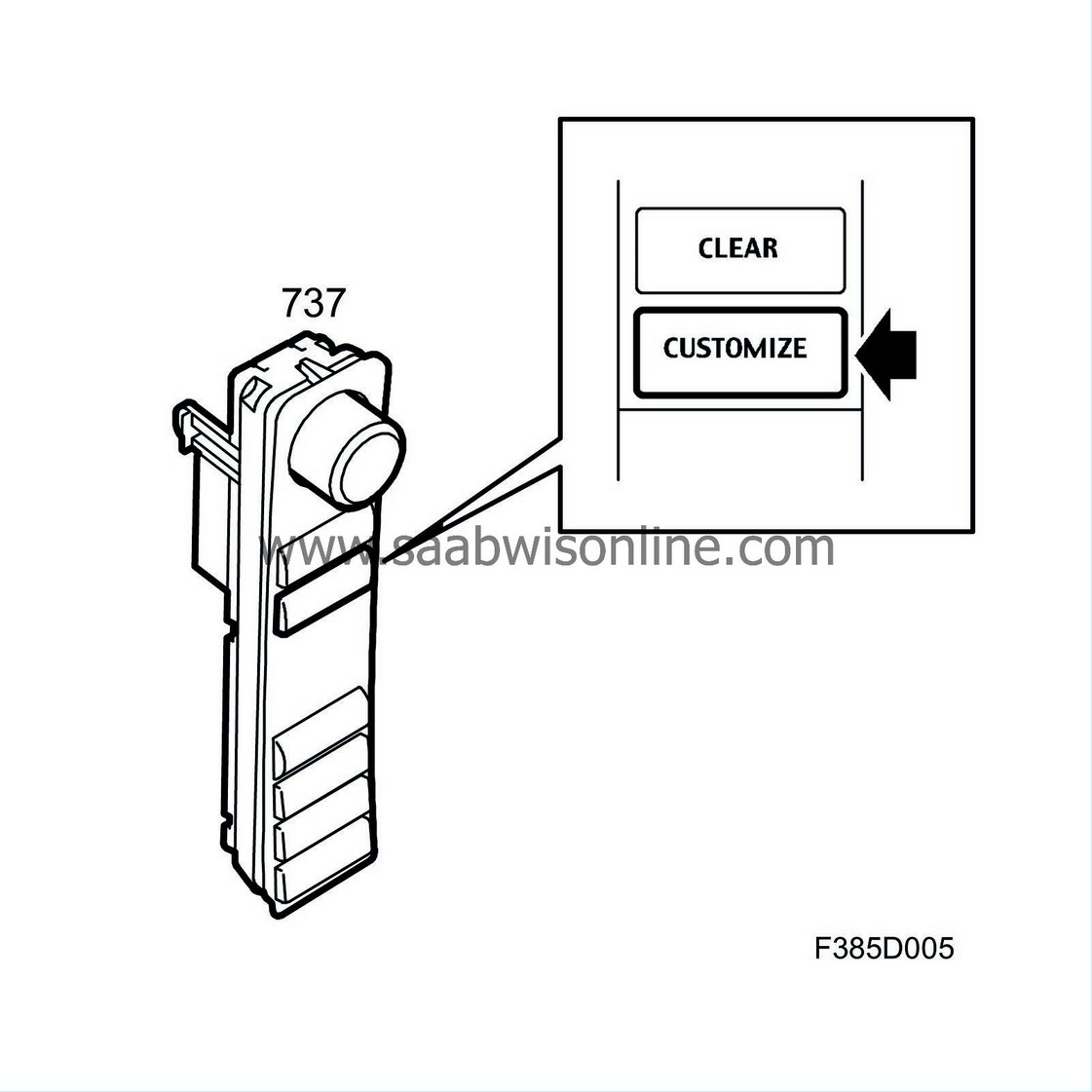
Parking assistance can be discontinued from Customer Settings.
| 1. |
Go to Customer Settings by pressing the CUSTOMIZE button on SIDC.
|
|
| 2. |
Select "Park Assistance" with the INFO knob.
|
|
| 3. |
Press the INFO knob.
|
|
| 4. |
Select "SPA off".
|
|
| 5. |
Confirm the choice by pressing the INFO knob.
|
|
To engage parking assistance again, select "SPA on" from the "Park Assistance" menu.
| Text messages |
Text messages are stored in different languages in ICM (infotainment control panel) and is sent via two communication cables to SID, where they are displayed.
The following text messages are stored:
| - |
Parking assistance active.
|
|
| - |
Parking assistance off.
|
|
| - |
Parking assistance malfunction. Contact service.
|
|
| - |
Parking assistance sensor interference.
|
|
| Distance measurement and distance indication |
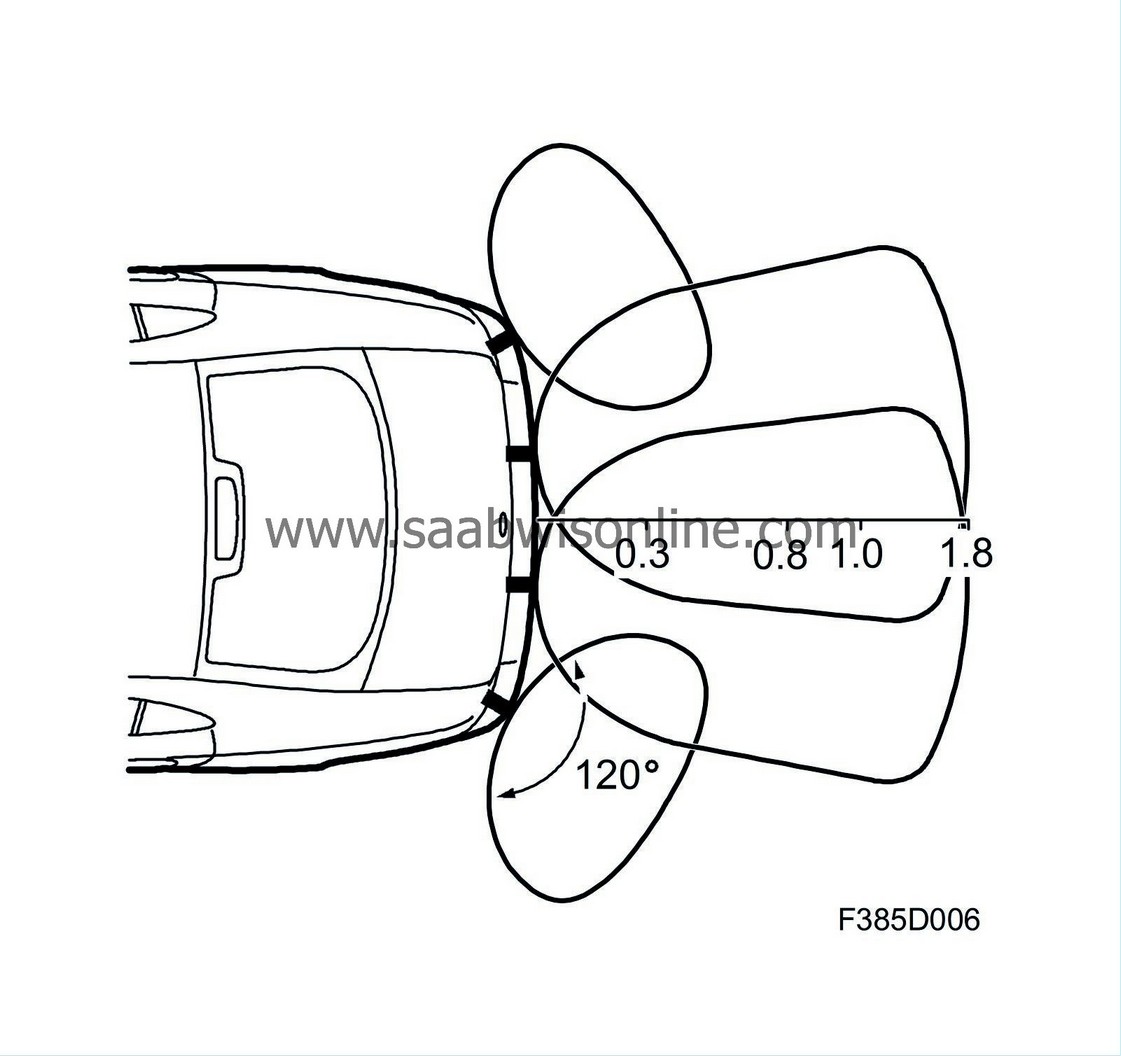
The four distance sensors use ultrasound to measure the distance to the object behind the car. They are located in the rear bumper and are named as follows:
| • |
Left outer distance sensor (RL)
|
|
| • |
Left centre distance sensor (RLC)
|
|
| • |
Right centre distance sensor (RRC)
|
|
| • |
Right outer distance sensor (RR)
|
|
The control module receives information from the underhood electrical centre, UEC (manual transmission) or TCM (automatic transmission) via a bus message when reverse gear is selected, and the control module then activates the distance sensors. These sensors begin to transmit and receive audible signals according to a loop controlled by the control module which is repeated 3 times a second.
Each distance sensor contains a piezo-electric element that acts as both a speaker element and a microphone element.
The distance sensors transmit wide angle ultrasound (120° horizontal and 60° vertical) and receive reflected acoustic signals. These signals are converted to digital signals that are conveyed to the control module for calculation of the distance to the closest object.
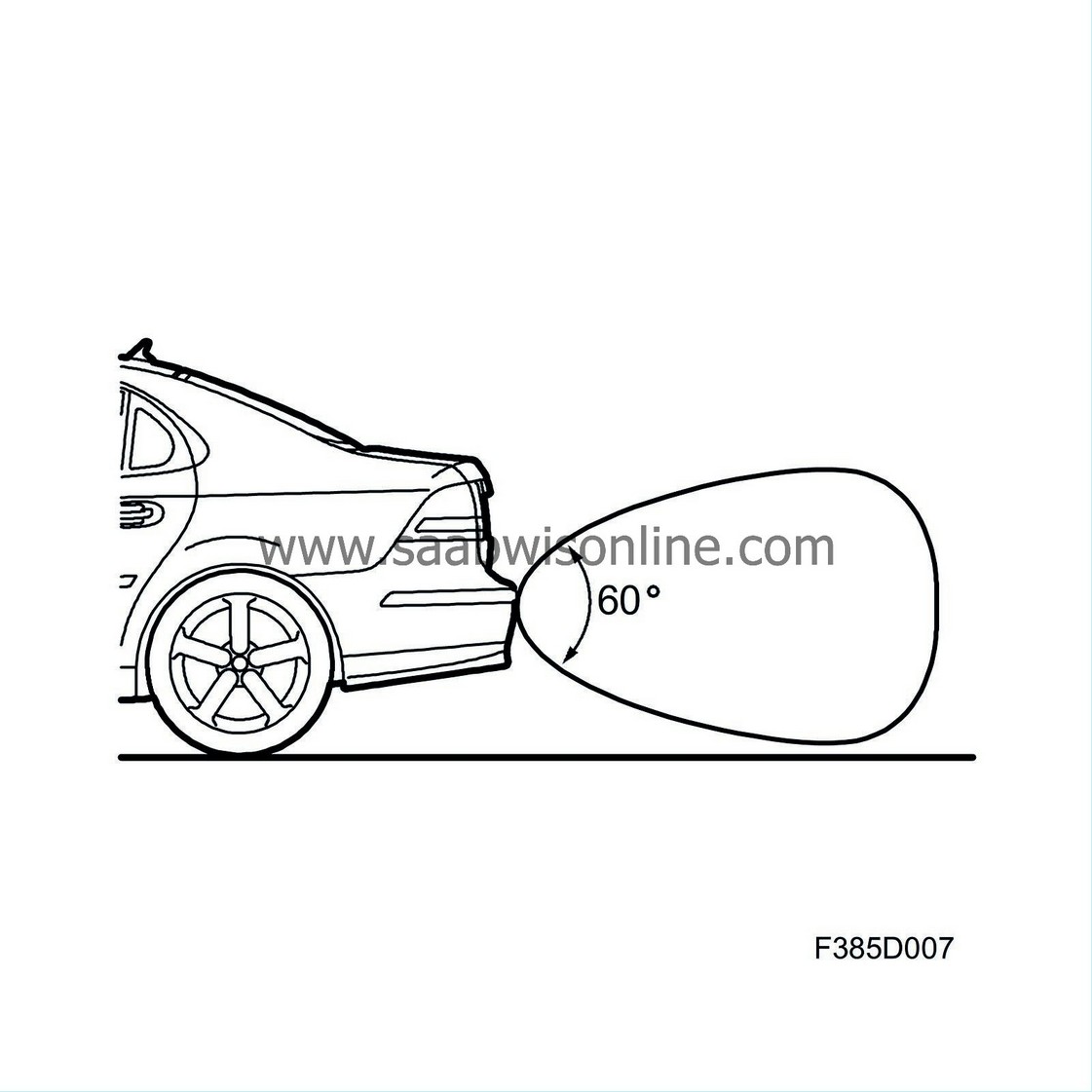
When calculating the distance, the control module takes information from the distance sensors (within 180 cm behind and 50 cm to the side), vehicle speed (below 14 km/h) and outside temperature.
Continuous information from the sensors concerning the closest object is processed by the control module so that the correct value can be sent to the I-bus. The audio system uses the information for indicating to the driver.
The driver receives information concerning the closest object behind the vehicle in the form of a varying number of tones from the audio system. The first tone is given when the object is 1.8 metres behind the vehicle and has a frequency of 2 tones per second.
The closer the vehicle comes to the object, the closer together the signals, until the car is 30 cm or less from the object, when the signal is continuous. The signal changes as follows:
| • |
1.8 - 1.3 m: 2 tones/second
|
|
| • |
1.3 - 1.0 m: 3 tones/second
|
|
| • |
1.0 - 0.8 m: 6 tones/second
|
|
| • |
0.8 - 0.3 m: from 10 to 50 tones/second in close steps
|
|
| • |
0.3 - 0 m: steady tone
|
|
The distance sensors work in a loop pattern (controlled by the control module) that is repeated 3 times per second. The loop has the following pattern:
| - |
Step 1:
Sensor 1 - RL - sends acoustic signals and listens with sensors 1 and 2.
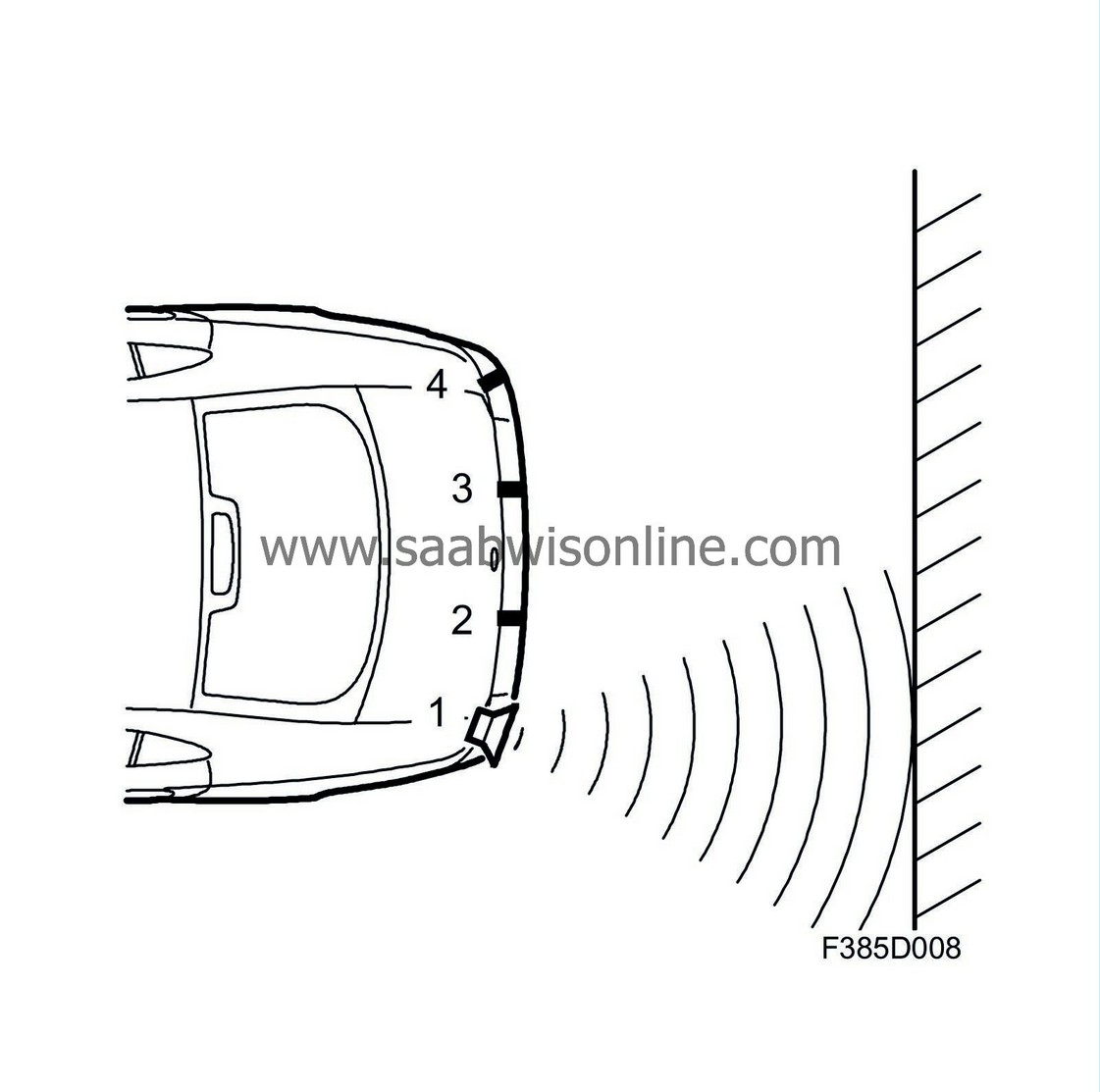

|
|
| - |
Step 2:
Sensor 2 - RLC - sends acoustic signals and listens with sensors 1 and 2.
|
|
| - |
Step 3:
Sensor 2 - RLC - sends acoustic signals and listens with sensors 2 and 3.
|
|
| - |
Step 4:
Sensor 3 - RRC - sends acoustic signals and listens with sensors 2 and 3.
|
|
| - |
Step 5:
Sensor 3 - RRC - sends acoustic signals and listens with sensors 3 and 4.
|
|
| - |
Step 6:
Sensor 4 - RR - sends acoustic signals and listens with sensors 3 and 4.
|
|
When this loop is complete, the control module will determine the closest object behind or beside the vehicle, i.e. the object for which the driver should be warned, using Pythagoras' theorem (a 2 +b 2 =c 2 ).
ceif the driver reverses at a speed in excess of 1.8 m/s (6.5 km/h), parking assistance (SPA) is of no use as the distance indication is limited to 1.8 m behind the car. At this speed, the driver would have 1 second in which to react and stop the vehicle. The braking distance also has to be taken into account. The car must be travelling at a moderate speed in order to use parking assistance.
If the distance sensors are covered with ice, snow or dirt, their operation will be impaired. The distance sensors should be wiped clean.
If the car is reversing on a surface that reflects a lot of ultrasound back to the car sensors, the system may indicate the distance to the ground instead of an object behind the car. This can happen e.g. on a gravel road or other uneven surface. Functional tests should be performed on flat ground without ground-based objects.
| Side objects |
Parking assistance can also allow for objects located at the side of the car, e.g. while reversing adjacent to a garage wall. In this case, if any of the outer distance sensors detect an object that adjacent sensors have not detected then the object will be indicated as a side object. The limit for detecting side objects is approx. 50 cm.
If the object located at the side of the car remains at a constant distance for more than 3 seconds, indication stops. Instead, the next nearest object will be signalled to the driver. If the object located at the side of the car approaches by 5 cm (2 inches), the control module will once again indicate this object to the driver via the audio system.
| Towbar |
The system is automatically switched off when a trailer or caravan is hooked up to the car. The system will adapt instantly if a rear hitch is fitted. This information is transmitted on the I-bus by the rear electrical centre, REC (701).
| Control module |
The control module is programmed to suit all car variants. It is connected to the bus and communicates with ICM for distance indication and text messages, and to the diagnostic tool for diagnostic communication. After changing the control module, all the necessary information from associated control modules is retrieved on the bus.
Mode
The control module has four modes. The distance sensors are active in modes 2 (Measuring) and 3 (Presentation).The four modes are
| • |
Mode 1,
Standby
- the control module is in standby mode and awaiting information on the bus. If reverse is engaged then the control module will switch to mode 2.
|
|
| • |
Mode 2,
Measuring
- the control module (and the sensors) is measuring within a range of 180 cm and cannot detect an object.
|
|
| • |
Mode 3,
Presentation
- the control module is measuring within a range of 180 cm and indicates an object with an acoustic signal on the speakers.
|
|
| • |
Mode 4,
Off
- the control module is turned off temporarily via SIDC with the CLEAR button or permanently with the CUSTOMIZE button.
|
|
The control module activates the sensors in mode 2 (Measuring) first with power supply, ground and bus communication.


